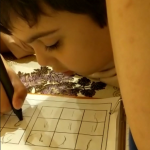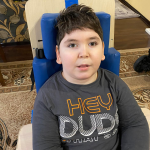What Triggers Tantrums in a Child with Autism
A tantrum in a child with autism is an intense reaction to an overload that exceeds the adaptive capacity of their brain. Crisis situations in children with autism occur much more frequently than in neurotypical children. To react correctly and, if possible, avoid stress, it is important to understand the specific causes of tantrums in autistic children.
Top Causes of Tantrum Behavior in a Child with Autism
Changes in the Routine: Stability, order, and adherence to a schedule are crucial for an autistic child. Any change in a set routine or daily schedule can trigger a tantrum in an autistic child.
Sensory Hyper-sensitivity: Over-sensitivity to sounds, light, temperature changes, tactile sensations, smells, and even tastes can provoke a strong negative reaction in an autistic child. Some children may tolerate sounds well but be very sensitive to lighting, while others may be the opposite. It’s important for parents to know the “stop-list” of triggering factors.
Reaction to a New Environment: A sudden change in environment, moving homes, or even something as simple as a visit from guests can be stressful for an autistic child. The attention of strangers, changes in the daily schedule, and unfamiliar living conditions can increase the child’s anxiety levels.
Visiting Crowded Places: Particularly challenging for a home-bound, poorly socialized child with autism. A tantrum may occur during visits to the supermarket, shopping mall, or even a train station. Large crowds, unfamiliar people, and noise negatively affect the child’s well-being. When possible, choose non-peak hours to visit such places and gradually acclimate the child to public spaces.
Unmet Basic Needs: While a neurotypical child may express their hunger or need for rest, an autistic child might remain silent but still feel stressed. Fatigue, the need to sleep, eat, or drink—unmet basic biological needs—can trigger a tantrum. Parents usually know their child’s daily routine and stick to it.
Lack of Understanding from Others: An autistic child can be easily overwhelmed during communication. If people interact with the child but don’t know how to communicate effectively and don’t understand them, this can inevitably lead to a tantrum.
Correctional Therapy for Children with Autism Minimizes Tantrum Behavior
Autism, as of today, is a condition that cannot be fully cured, but it can be successfully corrected, allowing the child to live a nearly full life. Stem cell transplantation for children with autism helps reduce the traits of ASD and provides the child with a significant boost in speech development, logical thinking, memory, emotional regulation, and socialization. Within 12 months after the procedure, the young patient gradually begins to show interest in areas they once seemed indifferent to, becomes calmer and more balanced, starts to speak new words, and improves test scores.
The Mardaleishvili Medical Center has been practicing this procedure for over eight years. Our patients come from majority of European countries and from countries of all over the world.
Learn more about the successes of children after stem cell transplantation from the specialists at Mardaleishvili Clinic.
Autism Treatment Center Videos
Autism treatment with own stem cells
Cord blood association congress
International Quality Crown
Autism Treatment Reviews
Autism treatment with own stem cells
The story of Alessandro (6 years old)
Autism Patient Testimonial - Stem Cell Treatment
Clients Testimonials

Feedback from Igor, David’s father (12 years old) Read More

Feedback from Olga, Fedya’s mother Read More

Feedback from Natalia, Radomir’s mother (15 years old) Read More

Feedback from Esther, Samuel’s mother (8 years old) Read More

Feedback from Abibe, Selim’s mother (7 years old) Read More












